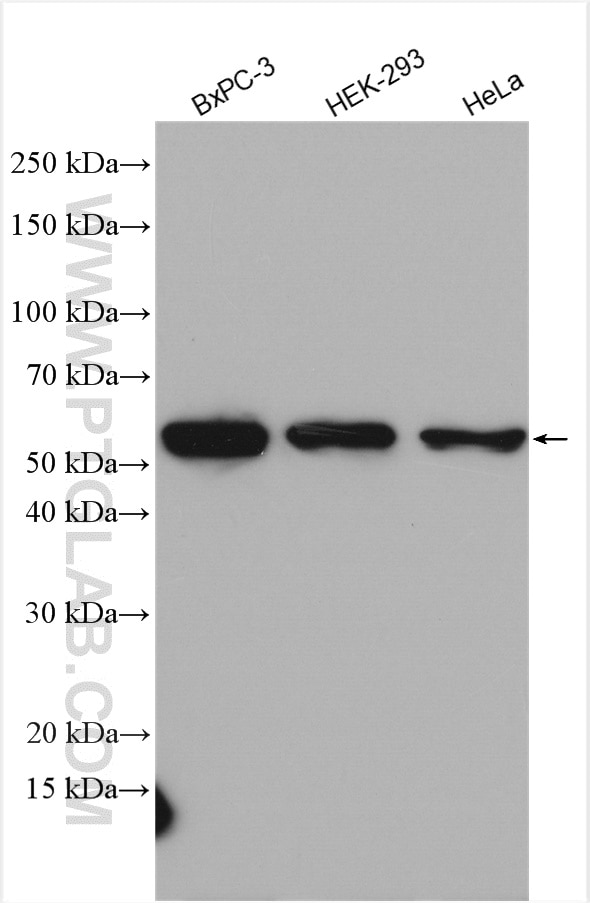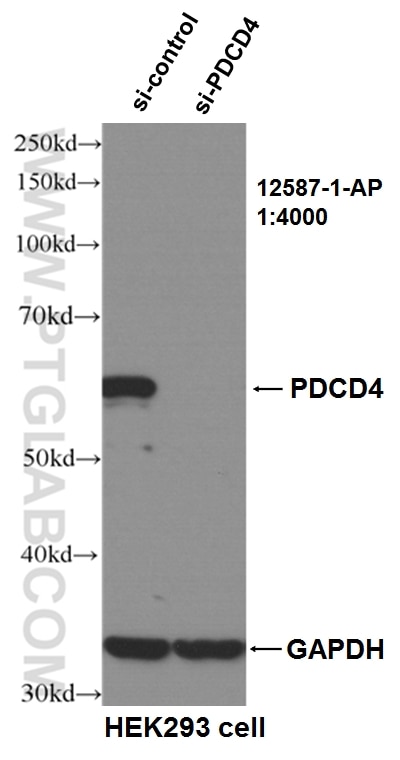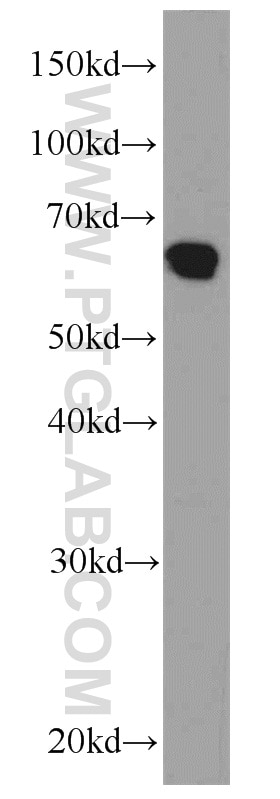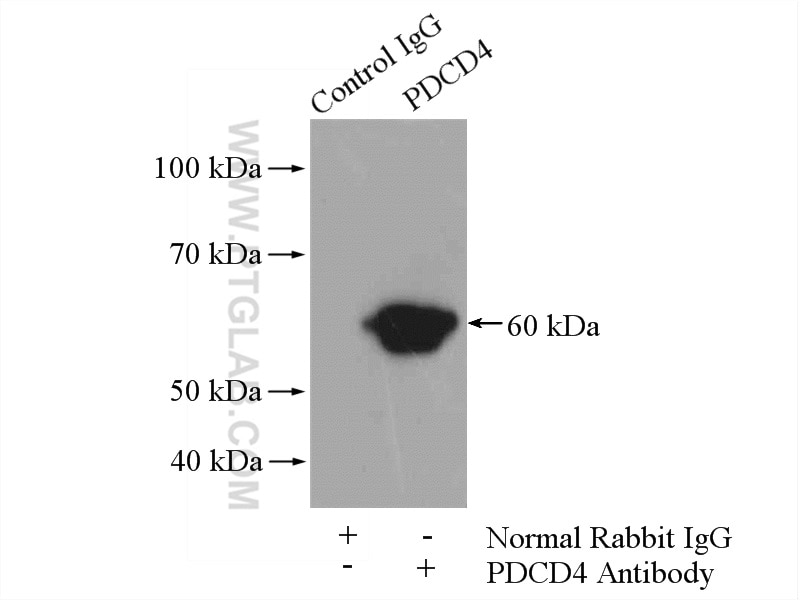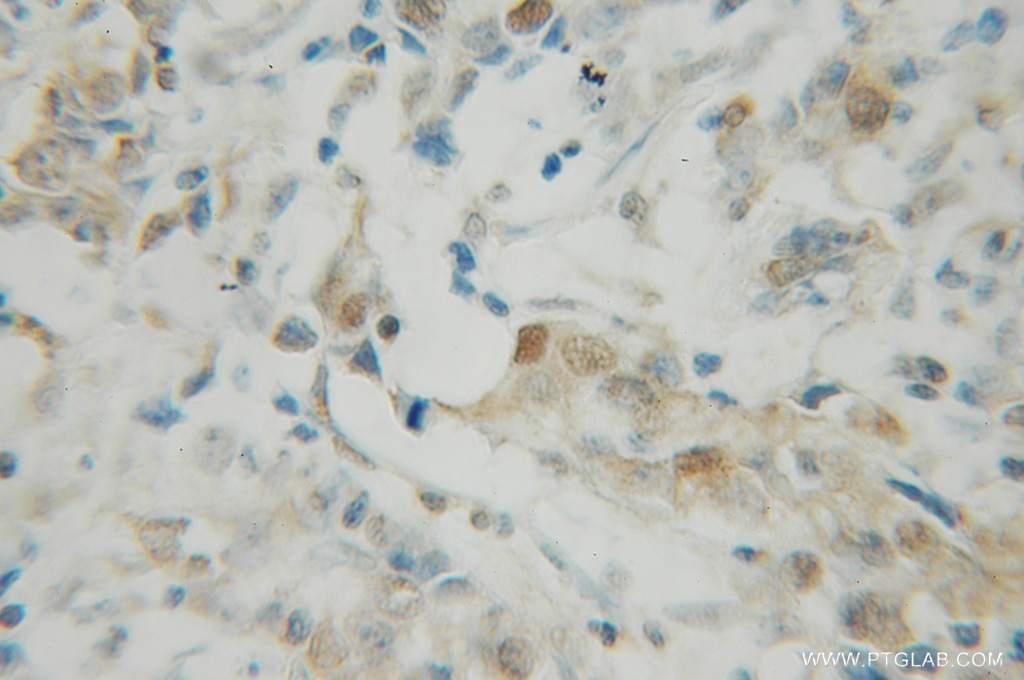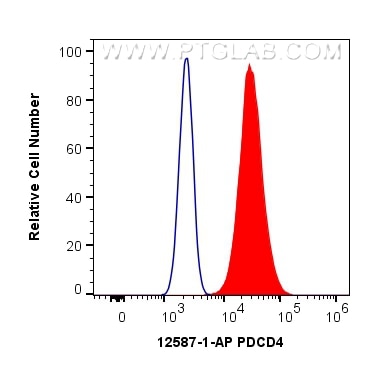- Featured Product
- KD/KO Validated
PDCD4 Polyklonaler Antikörper
PDCD4 Polyklonal Antikörper für WB, IP, IHC, ELISA, FC (Intra)
Wirt / Isotyp
Kaninchen / IgG
Getestete Reaktivität
human, Maus, Ratte
Anwendung
WB, IHC, IF, FC (Intra), IP, ELISA
Konjugation
Unkonjugiert
Kat-Nr. : 12587-1-AP
Synonyme
Geprüfte Anwendungen
| Erfolgreiche Detektion in WB | BxPC-3-Zellen, HEK-293-Zellen, HeLa-Zellen, MCF-7-Zellen |
| Erfolgreiche IP | HeLa-Zellen |
| Erfolgreiche Detektion in IHC | humanes Mammakarzinomgewebe Hinweis: Antigendemaskierung mit TE-Puffer pH 9,0 empfohlen. (*) Wahlweise kann die Antigendemaskierung auch mit Citratpuffer pH 6,0 erfolgen. |
| Erfolgreiche Detektion in FC (Intra) | MCF-7-Zellen |
| Erfolgreiche Detektion in FC | MCF-7-Zellen |
Empfohlene Verdünnung
| Anwendung | Verdünnung |
|---|---|
| Western Blot (WB) | WB : 1:1000-1:4000 |
| Immunpräzipitation (IP) | IP : 0.5-4.0 ug for 1.0-3.0 mg of total protein lysate |
| Immunhistochemie (IHC) | IHC : 1:20-1:200 |
| Durchflusszytometrie (FC) (INTRA) | FC (INTRA) : 0.40 ug per 10^6 cells in a 100 µl suspension |
| Durchflusszytometrie (FC) | FC : 0.40 ug per 10^6 cells in a 100 µl suspension |
| It is recommended that this reagent should be titrated in each testing system to obtain optimal results. | |
| Sample-dependent, check data in validation data gallery | |
Veröffentlichte Anwendungen
| KD/KO | See 6 publications below |
| WB | See 31 publications below |
| IHC | See 8 publications below |
| IF | See 2 publications below |
Produktinformation
12587-1-AP bindet in WB, IHC, IF, FC (Intra), IP, ELISA PDCD4 und zeigt Reaktivität mit human, Maus, Ratten
| Getestete Reaktivität | human, Maus, Ratte |
| In Publikationen genannte Reaktivität | human, Maus, Ratte |
| Wirt / Isotyp | Kaninchen / IgG |
| Klonalität | Polyklonal |
| Typ | Antikörper |
| Immunogen | PDCD4 fusion protein Ag3288 |
| Vollständiger Name | programmed cell death 4 (neoplastic transformation inhibitor) |
| Berechnetes Molekulargewicht | 469 aa, 52 kDa |
| Beobachtetes Molekulargewicht | 54-64 kDa |
| GenBank-Zugangsnummer | BC026104 |
| Gene symbol | PDCD4 |
| Gene ID (NCBI) | 27250 |
| Konjugation | Unkonjugiert |
| Form | Liquid |
| Reinigungsmethode | Antigen-Affinitätsreinigung |
| Lagerungspuffer | PBS with 0.02% sodium azide and 50% glycerol |
| Lagerungsbedingungen | Bei -20°C lagern. Nach dem Versand ein Jahr lang stabil Aliquotieren ist bei -20oC Lagerung nicht notwendig. 20ul Größen enthalten 0,1% BSA. |
Hintergrundinformationen
Programmed cell death 4 (Pdcd4) is a novel tumor suppressor that inhibits translation, progression and invasion. It was first identified as being differnetially upregulated during apoptosis. Pdcd4 interferes with the activity of the eukaryotic initiation factor (eIF) 4A by displacing the scaffold protein eIF4G from its binding to the RNA helicase eIF4A. The calculated molecular wight of unmodified PDCD4 protein is 52 kDa, but the modified protein is about 54-64 kDa.
Protokolle
| PRODUKTSPEZIFISCHE PROTOKOLLE | |
|---|---|
| WB protocol for PDCD4 antibody 12587-1-AP | Protokoll herunterladen |
| IHC protocol for PDCD4 antibody 12587-1-AP | Protokoll herunterladenl |
| IP protocol for PDCD4 antibody 12587-1-AP | Protokoll herunterladen |
| STANDARD-PROTOKOLLE | |
|---|---|
| Klicken Sie hier, um unsere Standardprotokolle anzuzeigen |
Publikationen
| Species | Application | Title |
|---|---|---|
J Nanobiotechnology Cold exposure protects against medial arterial calcification development via autophagy | ||
Oncogene miR-21a in exosomes from Lewis lung carcinoma cells accelerates tumor growth through targeting PDCD4 to enhance expansion of myeloid-derived suppressor cells.
| ||
Clin Transl Med Phosphoproteome reveals molecular mechanisms of aberrant rhythm in neurotransmitter-mediated islet hormone secretion in diabetic mice. | ||
Biomed Pharmacother MiR-208a-3p aggravates autophagy through the PDCD4-ATG5 pathway in Ang II-induced H9c2 cardiomyoblasts.
| ||
Oxid Med Cell Longev Protective Effects of PPARγ on Renal Ischemia-Reperfusion Injury by Regulating miR-21 | ||
Cell Cycle Resveratrol prevents rapamycin-induced upregulation of autophagy and selectively induces apoptosis in TSC2-deficient cells. |
